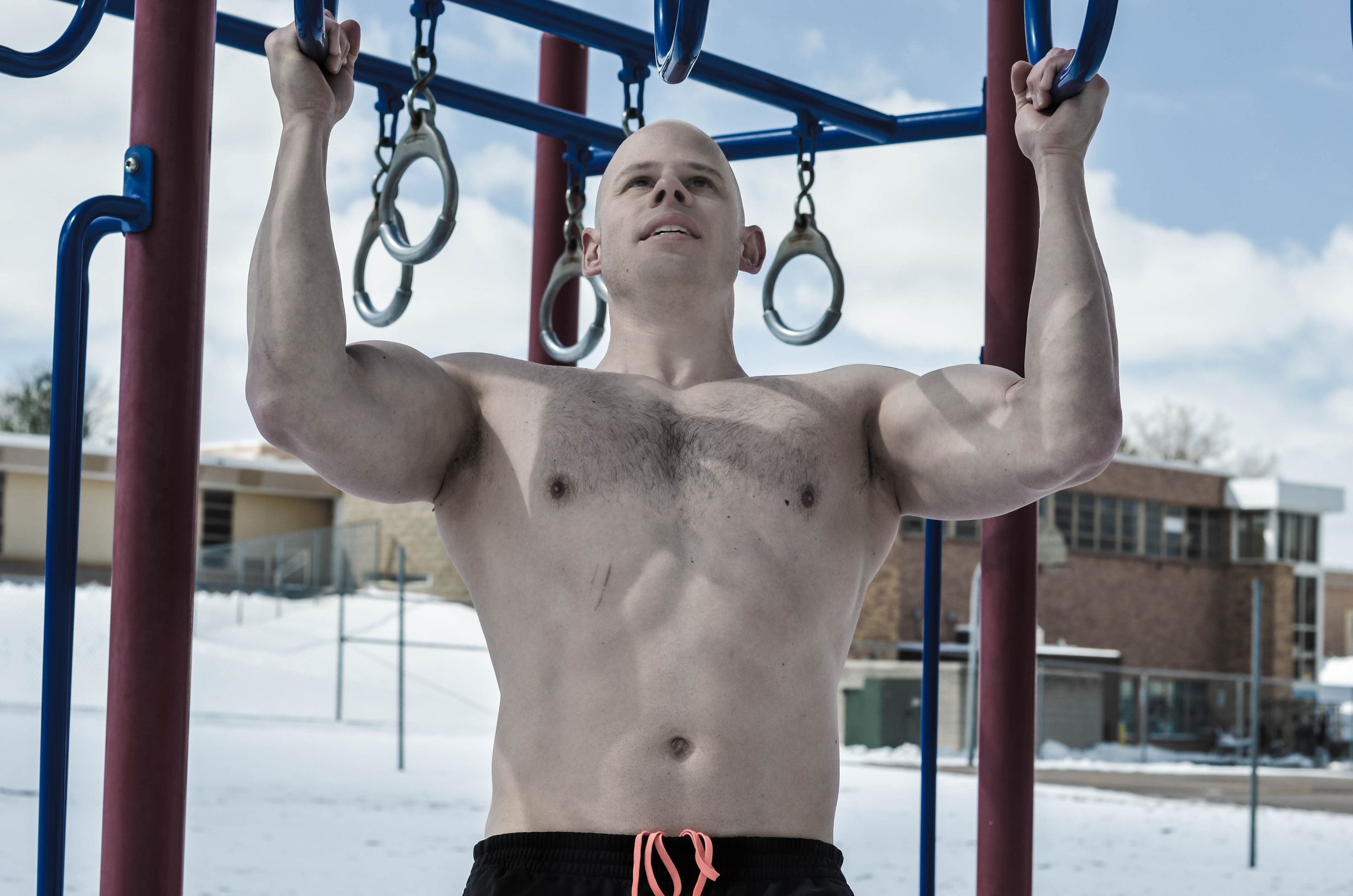How Rep Chasing Can Hurt Your Progress
One of the biggest myths in calisthenics is that the path to building muscle is to always strive to do repetitions. That you’re sure to build more muscle and strength if you can somehow manage to always do more push-ups or pull-ups. More reps don’t always equate to more gains.
Before you think I've gone crazier than usual hear me out. When your attention gets put toward the goal of chasing metrics, you may follow a path you don't want if your goal is to build bigger and stronger muscles.
Doing a lot of pull-ups is impressive, but it’s not always the best path to building strength.
If your goal is to make your muscles bigger and stronger then you’ll want to make sure we're doing a progressively more challenging technique. You want to challenge the work capacity of the muscle itself in your workouts. While chasing reps, like going from 10 push-ups to being able to do 20, that may look like you are progressing your work capacity (which is a combination of time and tension) but it's also very easy to cheat for the sake of reps. It's kind of like the individual who's so fixated on getting lean and they're focused on the metric of their weight on a scale. It's very easy to manipulate body weight without having any changes whatsoever in fat mass due to fluctuations in water weight. Similarly, you can pad up your metrics of how many reps you can do without actually making your muscles all that much bigger and stronger.
It all boils down to how you utilize efficiency in your training. Efficiency can either help or hurt your progress depending on what your goals are and what you're trying to get out of your workouts.
Single-arm rows are much less efficient than 2-arm rows, which is why they are an excellent way to build strength and muscle.
Efficiency is very helpful if you are trying to win at a game or reach a performance metric, like when passing a physical fitness test. In that case, you want to make your technique as efficient as possible to get your numbers higher.
However, when your goal is to stimulate a change in your body then you’ll want to make your technique less efficient to make it easier to create a strong stimulus the muscle will have to adapt to. In other words, making your training less efficient will drop your reps, but will make it a lot easier to build muscle and strength. Making the technique easier and more efficient will make your numbers go up, but it’s going to be much harder to create the stimulus you want.
I tell my clients at Capra Bodyweight Training that “we do things the hard way here.” I say this to let them know that things are supposed to feel difficult. I don’t want them doing hundreds of push-ups. If they can do 100 push-ups in a row, you can believe I’m going to give them a much more difficult technique to bring their reps down.
Dips on rings are much harder than on bars, which is why I almost always do them that way. I don’t get as many reps, and that’s a good thing.
We use a big range of motion or less stable implements like gymnastics rings. I’ll have clients stop and pause in difficult positions to make sure they are working their muscles as hard as possible. And yes that means their reps are going to go down, but it also means their training is more effective. The harder we make the exercise on ourselves the easier it is to trigger the adaptation we desire for our goals.
The bottom line is, the harder you make your training, the easier it will be to achieve your goals. You do, however, need to make your training challenging in the right ways. Doing a lot of endless reps can certainly be a challenge, but it’s not always the best way to push yourself. Using a more difficult, and less efficient technique is the way to go if you want to build much more strength.



